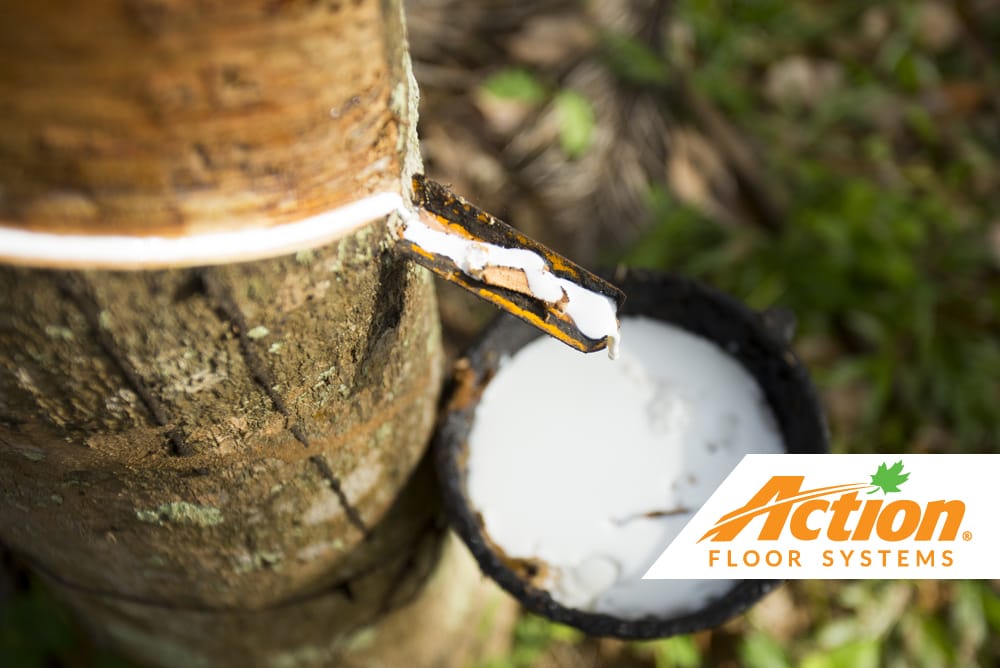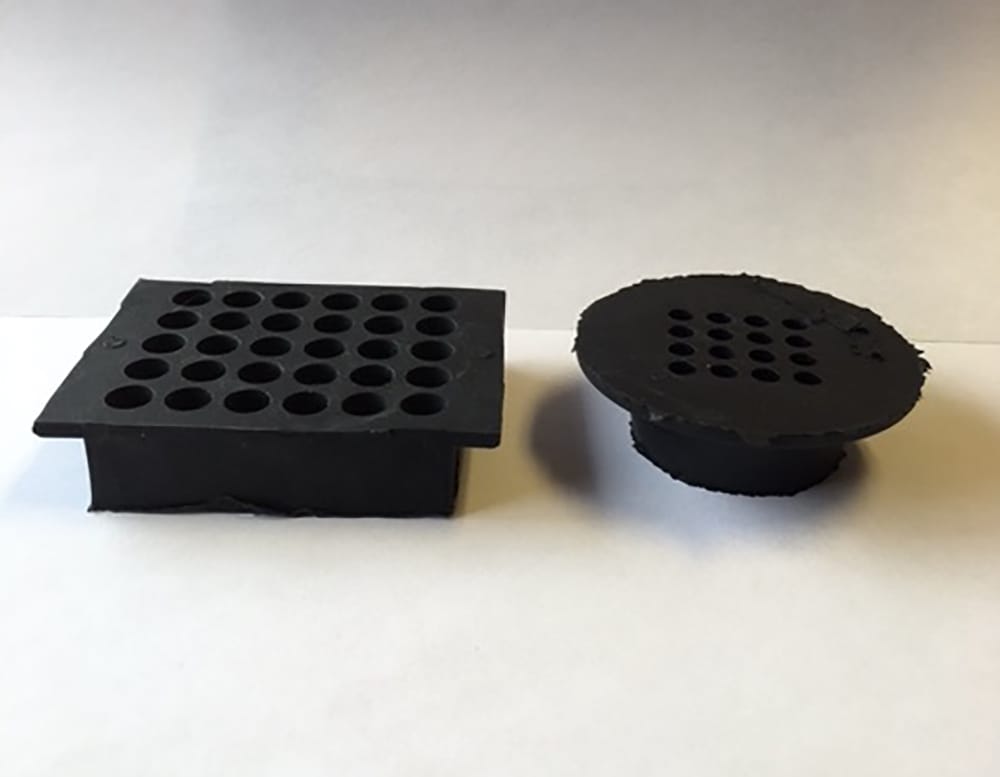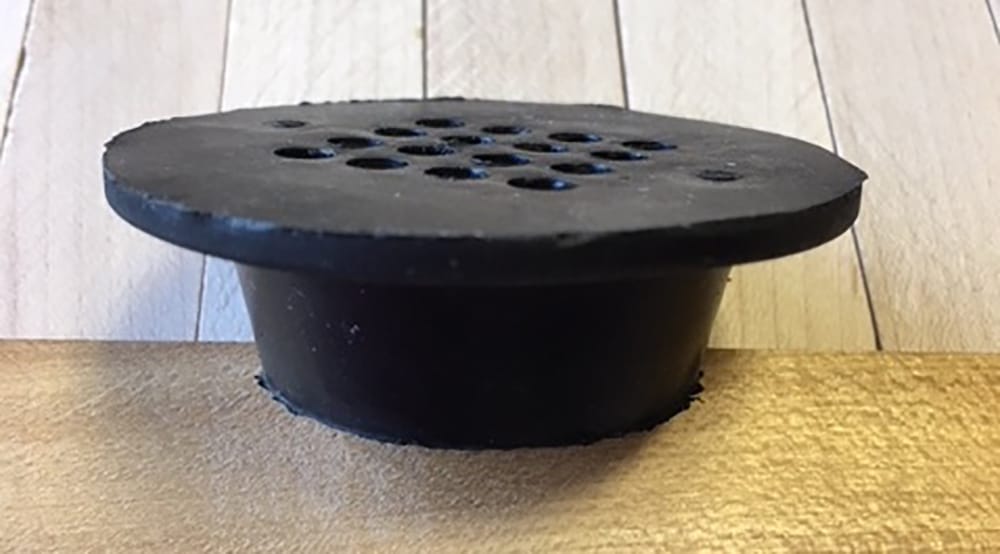
Because rubber is so ubiquitous, it’s something we take for granted and likely don’t think too much about. It’s what tires are made of, it’s on the bottom of our shoes, and on the cases of our mobile phones. Today, however, much of what we might think is natural rubber is actually a synthetic version of rubber. Synthetic rubber is made from petroleum products, and while technology has enabled it to function and look like natural rubber, the stability is not the same.
That can be critical when it comes to sports flooring systems, where performance is everything. Shock absorption, rebound, and durability are key factors in the quality of a floor system, and much of it has to do with the individual rubber pads within the system. Whether the pad in a flooring system is natural rubber or synthetic rubber can make a big difference in the performance, durability, and life of a floor system, as well as the impact on the environment.
Natural Rubber vs. Synthetic Rubber
The stories behind both natural and synthetic rubber are fascinating. It was Charles Goodyear that discovered how to take the sap from rubber trees (hevea brasiliensis) and turn it into a flexible product for a variety of uses. Goodyear combined natural rubber with sulfur, a process called vulcanization, to solve its issues of stickiness, odor, and perishableness. In doing so, this combination created an even stronger product that is resistant to abrasions, gouging, and cutting. The molecules can actually repair themselves, which is ideal for high impact flooring, where shock absorption and dynamic loads are critical.
Synthetic rubber was developed during WWII, when supplies of natural rubber were cut off from countries that were major suppliers. By the 1960s, synthetic rubber was common and used in a range of products. It was cheaper to make and functions in some of the ways that natural rubber does.
Today, the synthetic rubber used in some sports flooring systems is called Ethylene Propylene Rubber (EPDM). It has moderate to good resistance to a variety of chemicals and functions well in both low and high temperature environments. However, while both natural rubber and EPDM are vulcanized, EPDM does not share natural rubber’s ability to resist cracking, healing, and tearing, which can affect the performance of the floor over time.
The Unique Characteristics of Natural Pads
Action Floor Systems’ natural rubber pads are internationally known for their superior performance and quality. Each of our three types of natural rubber pads provide unique attributes and were developed to maximize the performance of the floor systems for which they are used.

Our AirTech and Thrust pads feature vertical air cells that act as metering shock absorbers that control the defection and rebound of the pad. They react at only 75% of the load required to compress synthetic pads of similar size, and their lower hardness provides greater flexibility and resilience for quicker recovery after impact. Both pads maintain their durometer, don’t oxidize, don’t crumble or disintegrate with age, and don’t suffer compression set. This ensures a more consistent performance from your flooring year after year.

Our ProAction pads feature a radial shape that allows the pad to quickly compress on the initial load input and then gradually build resistance to the load, slowing the floor systems’ deflections. For example, if a bigger athlete jumps on the floor, the pad will deflect further, always offering players consistent feel and shock absorption.
What’s Good for a Sport’s Floor is Even Better for the Environment
Natural rubber is an inherently environmentally friendly material and rubber trees contribute to environmental protection. Rubber trees are grown on over 10 million hectares worldwide and annually remove 363,000 tons of carbon dioxide, replacing it with 264,000 tons of oxygen, which helps combat the greenhouse effect and global warming.
Raw natural rubber latex is comprised of 25-40% of rubber hydrocarbon along with other non-rubber substances such as proteins, lipids, carbohydrates, sugars, some metals, fatty acids, and water.
Synthetic rubber is made from ethylene, propylene, ethylidene norbornene, dicyclopentadiene, and vinyl norbornene. These components, while useful for the structure of synthetic rubber, contribute to adverse environmental impacts like acidification and eco-toxicity.
The Natural Choice for Quality Sports Flooring
If you’re looking for quality sports flooring that will provide a lifetime of top performance and durability, you’ll want to be sure that your floor’s padding supports that effort. We pride ourselves on offering natural rubber pads in our systems because it enhances the quality of our products and supports our environmental leadership.
Our sports flooring systems consist of the highest quality in both materials and performance. Contact us today to learn more about which of our flooring systems will work best for your particular needs.


















